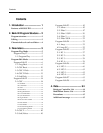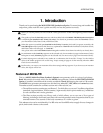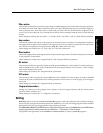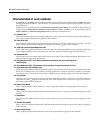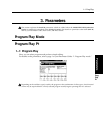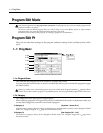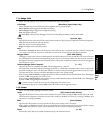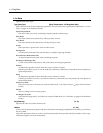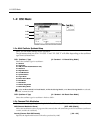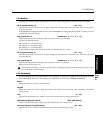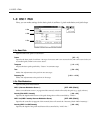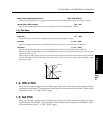
Filter section
This section modifies the waveform by attenuating or emphasizing specific portions of the frequency spectrum.
It contains two multi-mode filters. Each filter can be set to one of the following types: low pass filter, high pass
filter, band pass filter, band reject filter, or dual band pass filter. This lets you modify the brightness of the
sound. You can also select the way in which the two filters will be connected with the mixer section and amp
section.
These settings are made by the “3-2: Filter 1,” “3-3: Filter 1 SUB,” “3-4: Filter 2,” and “3-5: Filter 2 SUB” parameters.
Amp section
This section modifies the volume of the output from the filter section. It contains two independent amplifiers.
The signal which is input to each amplifier will depend on how the two filters are connected. The amp section
also contains an amplitude envelope generator (Amp EG) which controls the amp.
These settings are made by the “4-1: Amp” and “4-2: Amp EG” parameters.
Effect section
This section applies effects to the signal which is output from the amp section. It has the same parameter structure
as the programs of other banks.
These settings are made by the “Program Edit P7” and “Program Edit P8” parameters.
EG section
This section provides four general-purpose envelope generator (EG) units. The four EG’s for which settings are
made in the EG section can be used as modulation sources for the parameters of each section, in order to apply
time-variant change to the sound.
These settings are made by the “Program Edit P5” parameters.
LFO section
This section provides four general-purpose LFO units. The four LFO’s for which settings are made in the LFO
section can be used as modulation sources for the parameters of each section, in order to apply cyclic change to
the sound.
These settings are made by the “Program Edit P6” parameters.
Program basic section
Settings are made here for the program name, category, scale, key assign, keyboard, and the control nctions
(joystick, ribbon controller, etc.).
These settings are made by the “1-1: Prog Basic” parameters.
Editing
Bank M programs are similar to bank A and bank B programs, in the respect that they can be edited in Program
Play mode or by using the Performance Editor. One method to try is to use an existing program which resembles
the desired sound, and use Program Edit mode to edit the parametes.
The filter, amp, effect, EG and LFO sections will function in the same way as for banks they do inand B, but the
display page structure and the parameters are different (☞ “3. Parameters” in this manual).
The operation and parameters of the oscillator and mixer sections are unique to bank M programs.
Bank M Program Structure
Program Structure




